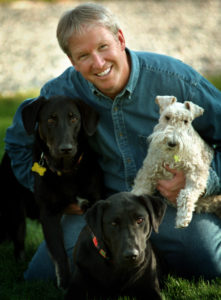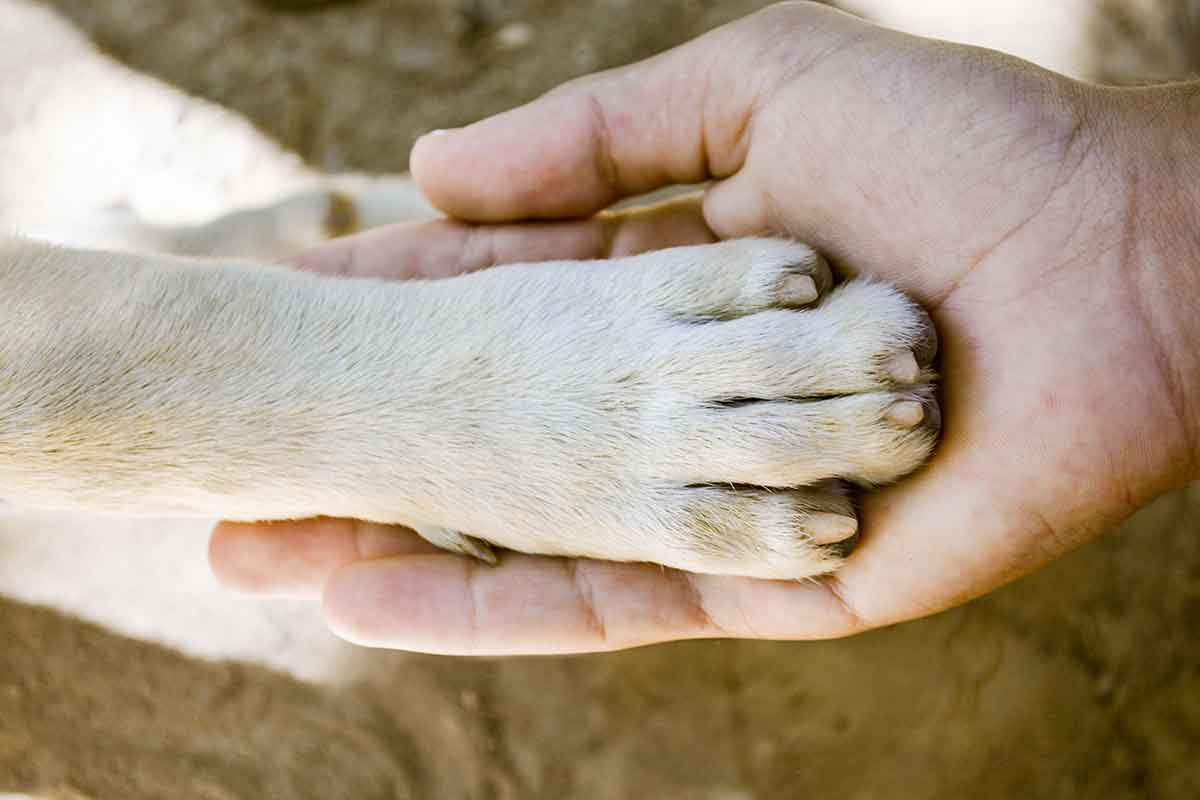We probably all remember Aesop’s fable about Androcles removing a thorn from a lion’s paw and being rewarded later on when the lion saves his life. But do animals really come to us when they’re hurting? The answer is often yes, although we don’t always realize it.
I have to admit, I was blind to pets presenting themselves to a human caretaker for help until nearly 20 years ago when I was writing The Healing Power of Pets. That’s a little embarrassing coming from not just a pet lover but a veterinarian who is trained to look past the obvious and see what lies beneath. What I learned changed my dog’s life and made me a better veterinarian and pet owner.
Actions Speak Loudly
As part of the research for my book, I traveled to Colorado State University College of Veterinary Medicine to interview integrative medicine expert Narda Robinson, DVM. She told me that dogs and cats will lick or rub areas that hurt or are inflamed, just as we might rub a sore shoulder. She suggested that when I went back home to Idaho I should observe my pets to see if they were rubbing certain areas of their bodies on the floor or licking a particular area.
“You don’t really even need to catch them in the act,” she said. “Just look for areas where the fur is roughed up from rubbing or licking. When you see the spots, feel them. You typically find that they are warmer from inflammation than surrounding tissues.”
If I discovered sore areas and inflammation, she advised gently massaging those spots, using a gentle, steady touch and avoiding bony prominences. Most important, never hold pets against their will. And if a pet is coming to you with a sore spot, it is crucial to determine the underlying cause.
I filed Dr. Robinson’s advice away, not realizing how soon it would come in handy.
Eyes Wide Open
 A few days after I got home, I was working at my desk, pounding away on the keyboard, when our elderly Wire Fox Terrier, Scooter, came upstairs to the loft where I write and over to my desk to be petted. I looked down and I could see that the fur over her left hip was roughed up.
A few days after I got home, I was working at my desk, pounding away on the keyboard, when our elderly Wire Fox Terrier, Scooter, came upstairs to the loft where I write and over to my desk to be petted. I looked down and I could see that the fur over her left hip was roughed up.
I put my hands on that spot, and I could feel the heat. I started massaging Scooter as Dr. Robinson had instructed, and soon Scooter was groaning with delight.
For the next week, at least twice a day, our beloved 12-year-old girl would seek me out and back up to me for a massage. I could almost hear a sound like those warning beeps trucks make when they drive in reverse. I’d start massaging, and Scooter would push up into my hands, almost purring with relief.
I took Scooter to North Idaho Animal Hospital and radiographed her hips. Eureka! She had hip dysplasia in her left hip joint. Looking back over the past several years, I realized she would present that area to be petted or rubbed first and for the longest. But I had ignored her communication with me.
From then on, I started watching our other pets more closely, and I saw the same type of behavior. On one occasion, our Lab, Sirloin, gave me his foot, because he had a cheatgrass awn embedded in it. I heard from other pet owners about their experiences, too. Their pets come to them with cut pads, broken toenails, arthritic pain or stomach upset, lifting a paw, rolling over, or just wanting to be extra close to their faithful humans. How special is that, that our animals trust us so much?
The human-animal bond is a wonderful thing in and of itself. But once we learn to go deeper and read our pets’ actions more clearly, it binds us even more strongly. That’s good for all of us, pets and people alike.
This article was reviewed/edited by board-certified veterinary behaviorist Dr. Kenneth Martin and/or veterinary technician specialist in behavior Debbie Martin, LVT.








